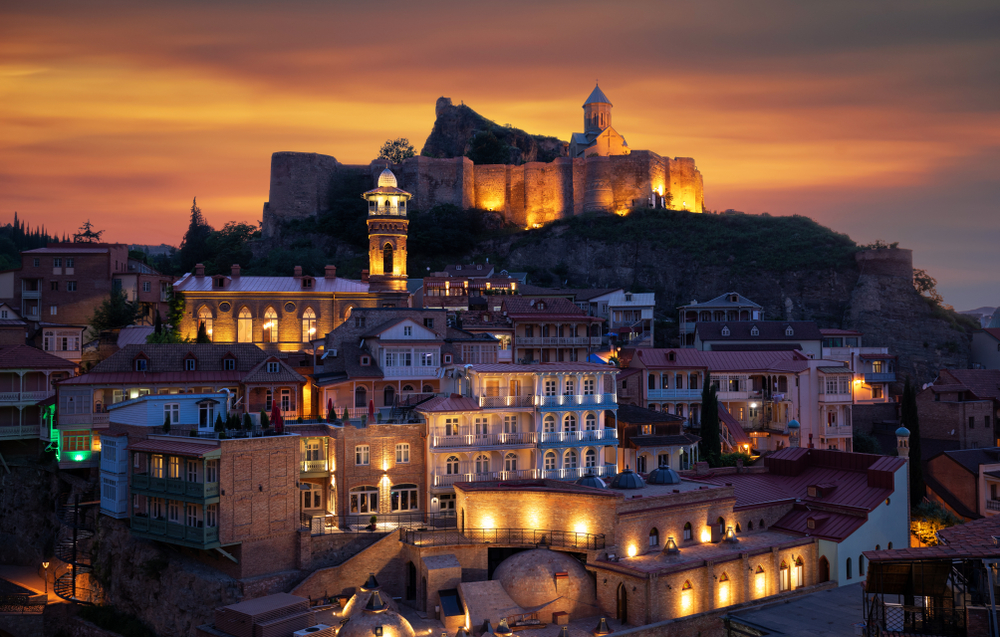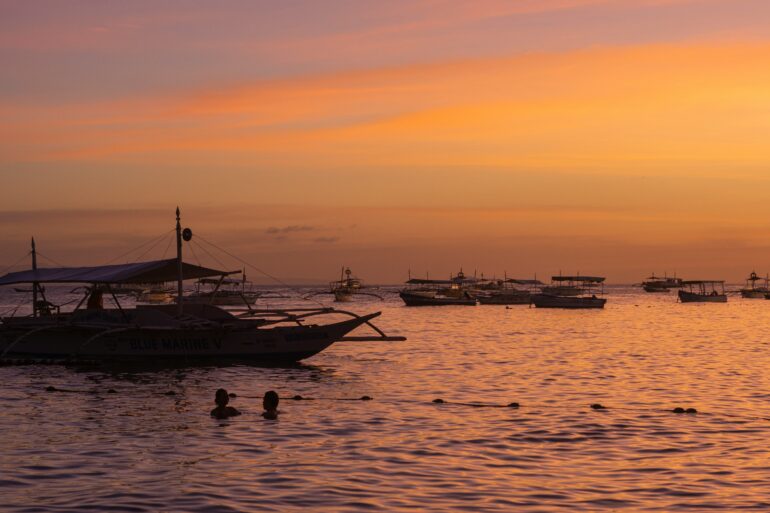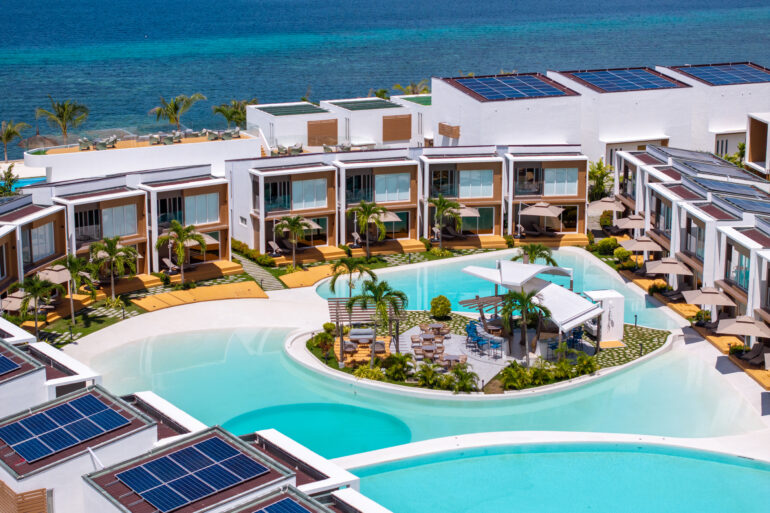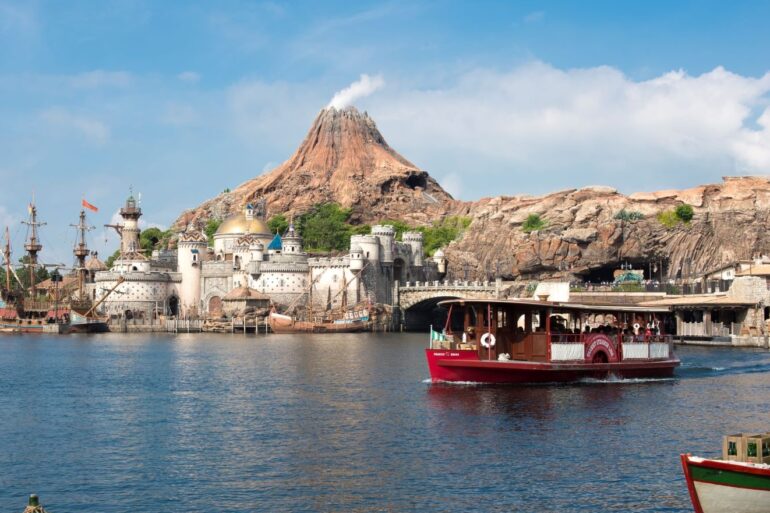The thrills of the South Caucasus: traveling through Armenia and Georgia.
At 2 p.m., the train from Yerevan in Armenia chugged and lazily sped its way to start the long continental journey to Batumi, a Black Sea resort town in Georgia, with a stopover by midnight in the Georgian capital Tbilisi—our destination.
The South Caucasus is where Europe ends and Asia begins, straddled by two mountain ranges, the Black Sea and the Caspian Sea.
Ahead of us was a 10-hour ride without WiFi over the Armenian plateau and through old cities and farm villages. Sometimes, the train was so near Turkey my mobile phone buzzed “Welcome to Turkey! Travel with Roam Surf,” while out in the open, there was the endless plateau on the horizon.
My wife Aien and I could have taken an easier route, such as a 5 to 6-hour car drive to Tbilisi. But what is traveling in the South Caucasus region without thrills?
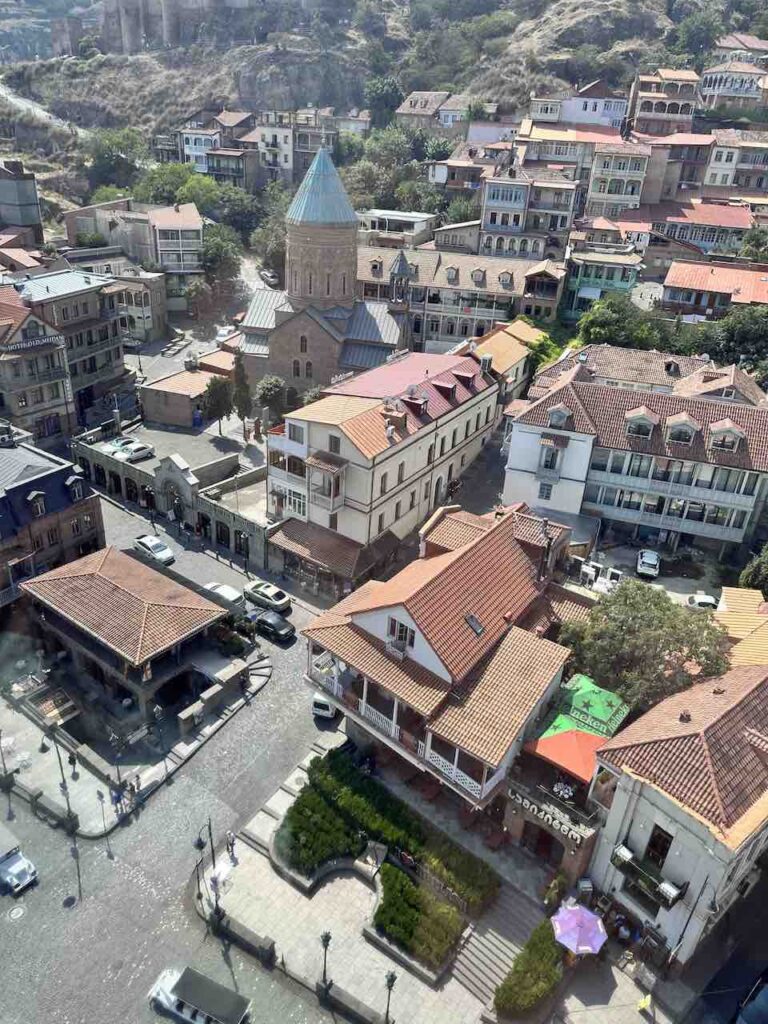


The train ride was the middle part of our 9-day sojourn covering two South Caucasus countries: Armenia and Georgia. (We’ve heard great reviews about Azerbaijan, but we are saving that for our next trip.)
The South Caucasus is where Europe ends and Asia begins, straddled by two mountain ranges—the Greater Caucasus in the north bordering Russia, and the Lesser Caucasus in the south near Turkey—and two major bodies of water, the Black Sea and the Caspian Sea.
The South Caucasus is also a growing popular destination for Filipinos, especially for those living and working in the Middle East and traveling to Turkey.
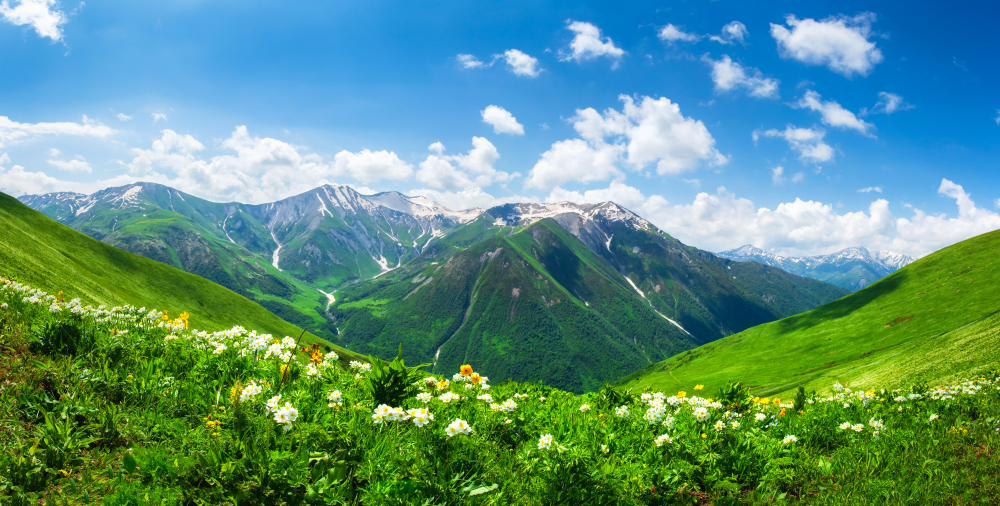


Filipinos with valid visas or residency permits in GCC countries, Schengen and EU, U.S., Australia, UK, Canada, Russia, Japan, and New Zealand can secure a visa upon arrival in Armenia. Those with visas or residence permits from any of a 95-country list can enter Georgia visa-free.
Otherwise, Filipinos only need to apply for their visas online and wait for an e-visa to arrive via email for Armenia (after 3 days) and Georgia (5 days). Filling out the form just takes a few minutes. (The Philippines is not part of the e-visa-eligible countries for Azerbaijan).
Yerevan: Armenia’s Pink City
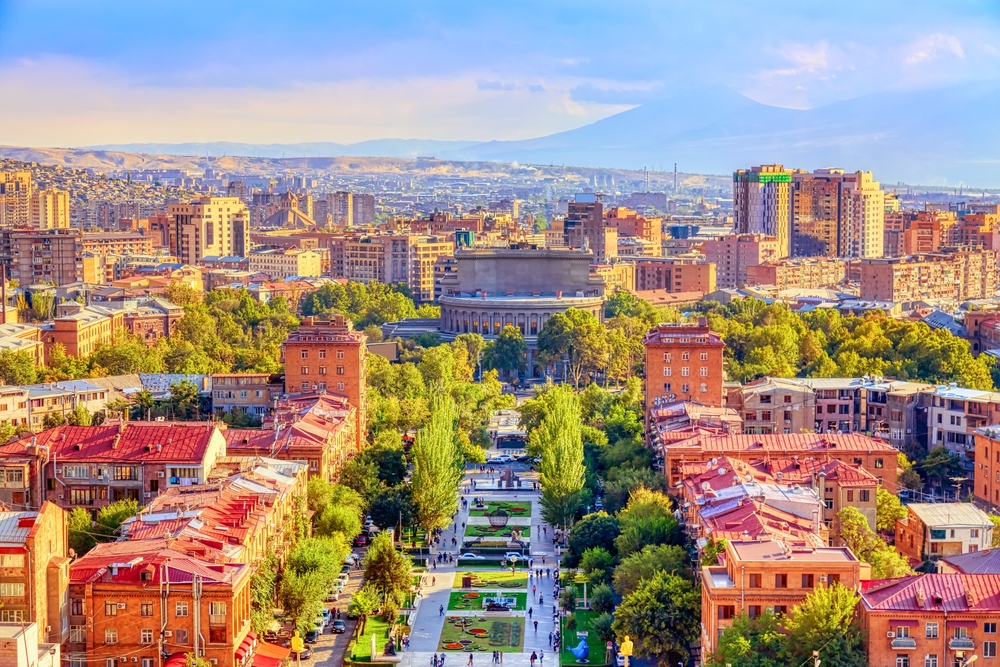


We began our trip in Yerevan, the capital of Armenia, and one of the oldest continuously inhabited cities in the world. Nearly 1,000 meters above sea level, Yerevan has been called the Pink City because of the natural material used to build its mid-rise buildings.
The city’s tree-lined boulevards, opera house, and large squares reflect the European city’s Soviet past. The popular Republic Square was once called Lenin Square where USSR parades were held until 1988. With beautiful neoclassical architecture surrounding a wide roundabout (including the History Museum of Armenia), Republic Square has been described by a famous travel writer as one of the finest central squares of the 20th century.
A weekend is short in Armenia, while four days is just right. It is best to diversify your itinerary to get a flavor of its spiritual, gastronomic, cultural, and modern traditions.
You can see the entire city from the top of the Cascade, a giant stairway made of limestone with a museum and surrounded by cafes and restaurants. Lamb, bread (lavash), cheese, and eggplant are staples in Armenian cuisine. The best places to eat in the city include Lavash and Gata Tavern.
It’s easy to go around the city by train or a taxi, but best to have Google Translate ready to help you talk with locals when asking for directions.
Biblical Land
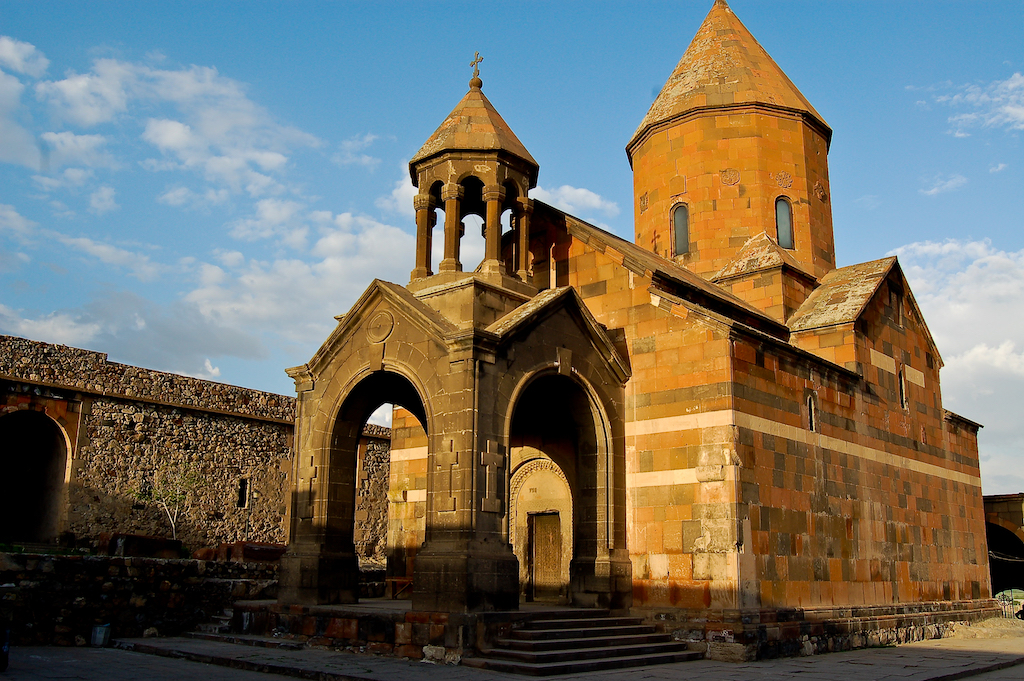


Much of Armenia’s beautiful sites are outside Yerevan, many of them narrating the country’s Christian traditions.
Christianity is believed to have arrived in Armenia through the apostles Bartholomew and Thaddeus. In the 4th century, Armenia became the first country to make Christianity its state religion—almost 80 years before the Roman Empire did. The Armenian Apostolic Church broke off as a branch of Christianity by rejecting the Council of Chalcedon, setting a path of independence and becoming one of the most ancient Christian churches in the world.
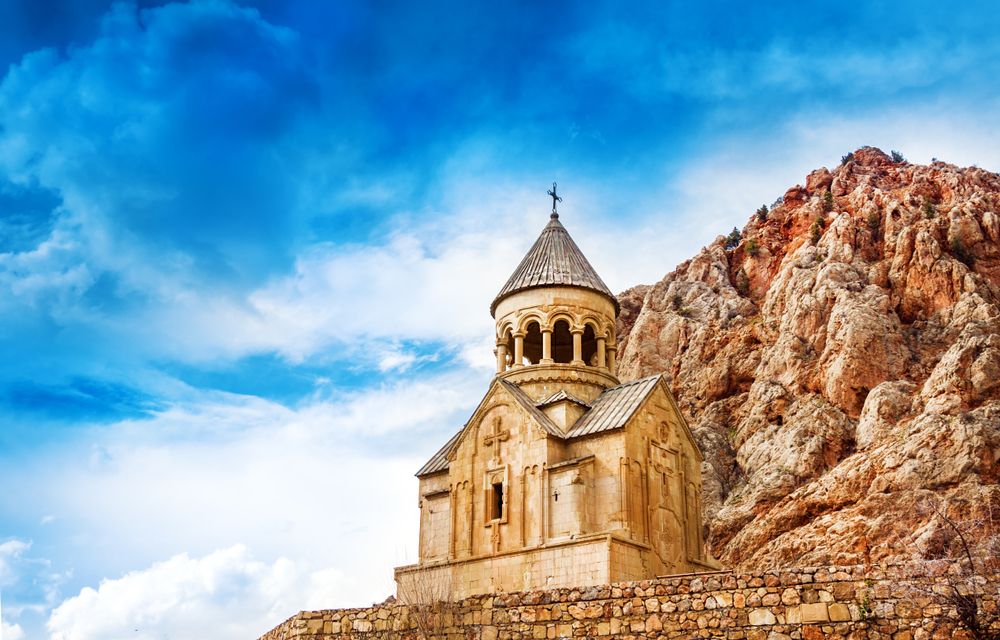


There is Khor Virap (“the deep pit”), a monastery near the Turkish border overlooking Mt. Ararat (a place cited in the Old Testament and from where Noah cultivated grapes and drank wine). St. Gregory the Illuminator, who inspired the conversion of the entire Armenia to Christianity, was imprisoned here in a 6-meter pit for 13 years. That pit is open for visitors to see.
Noravank, a monastery perched on a mountain, is a longer drive through zigzag mountainous roads and vineyards. When you do visit the place, make a stopover at Areni Winery for Armenian wines and winemaking history.
You can also visit both Khor Virap and Noravank in one day from Yerevan.
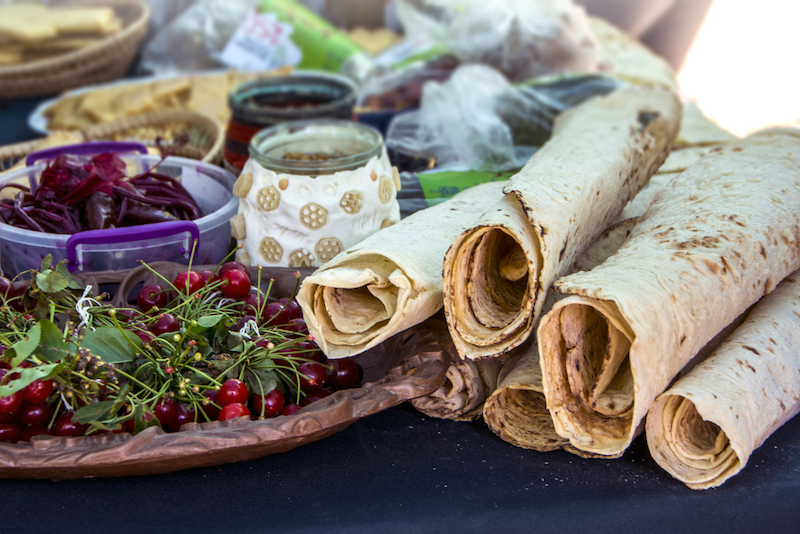


We visited a city called Vagharshapat, home of the Armenian church’s head called the Catholicos. Within the town are multiple UNESCO World Heritage sites—the Mother Cathedral of Echmiadzin, St Gayane Church, St Hripsime Church, and St Shoghakat Church—reflecting the finest of Armenian architecture.
At the museum of the 4th century Echmiadzin Cathedral rest relics Armenians believe to have biblical references: a piece of petrified wood is believed to be from Noah’s Ark and the Holy Lance, the spear that pierced through Jesus’ flesh on the cross.
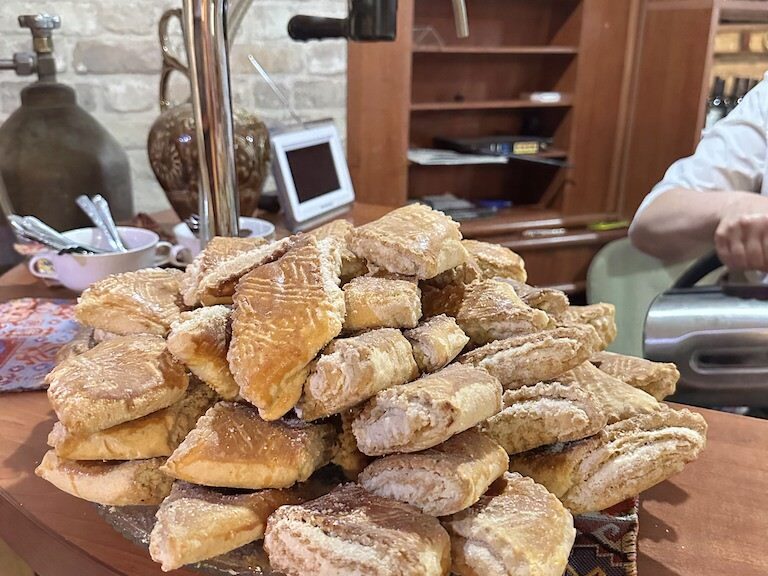


The archaeological ruins of Zvartnots, another UNESCO World Heritage site, can be visited on a day tour with Vagharshapat.
Although not a Christian church, Garni will complete the experience. Armenia was once an imperial province of Rome, but many of its pagan temples were destroyed with the adoption of Christianity. The Temple of Garni was spared and is the only Greco-Roman building remaining in the country.
Admittedly, Armenia’s religious sites can be overwhelming. It is best to diversify your itinerary to get a flavor of spiritual, gastronomic, cultural, and modern traditions. A weekend is short in Armenia, while four days is just right.
Tbilisi: The Old World
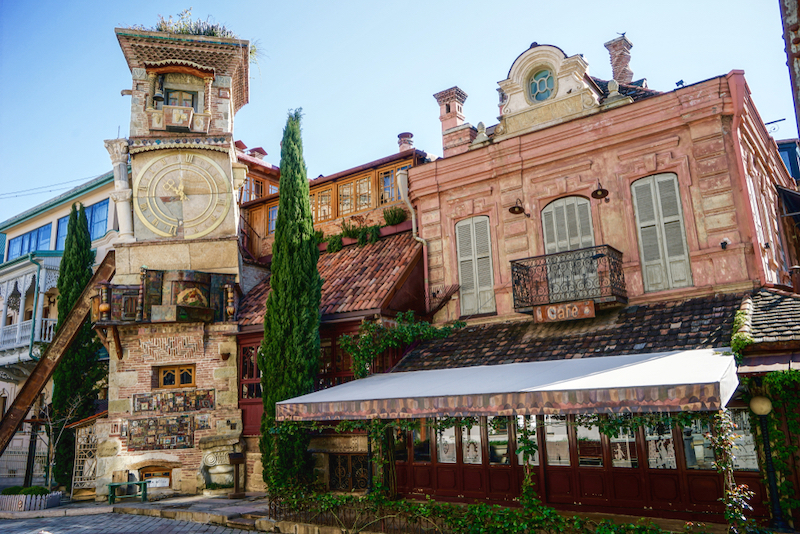


Inside a local joint in Tbilisi called Old Wall Restaurant, my wife and I found ourselves—along with a group of men at another table—alone for dinner.
We were told there was a local cultural performance of the famed Georgian polyphonic singing, which is a UNESCO Intangible Cultural Heritage of Humanity much like the Hudhud chants of the Ifugao. “Where are the performers?” I asked Aien.
Walking along Tbilisi’s tight neighborhoods of old houses, cobblestone streets, century-old Orthodox churches felt like a stroll back in time.
Then suddenly one of the men at the other table picked up a guitar and another began singing a poignant melody. More melodies joined in, sung by the other men around the table.
No stage, no microphone. The slumber hymn echoed across the empty restaurant. This was Georgia’s polyphonic singing tradition, one of the oldest singing styles in the world.
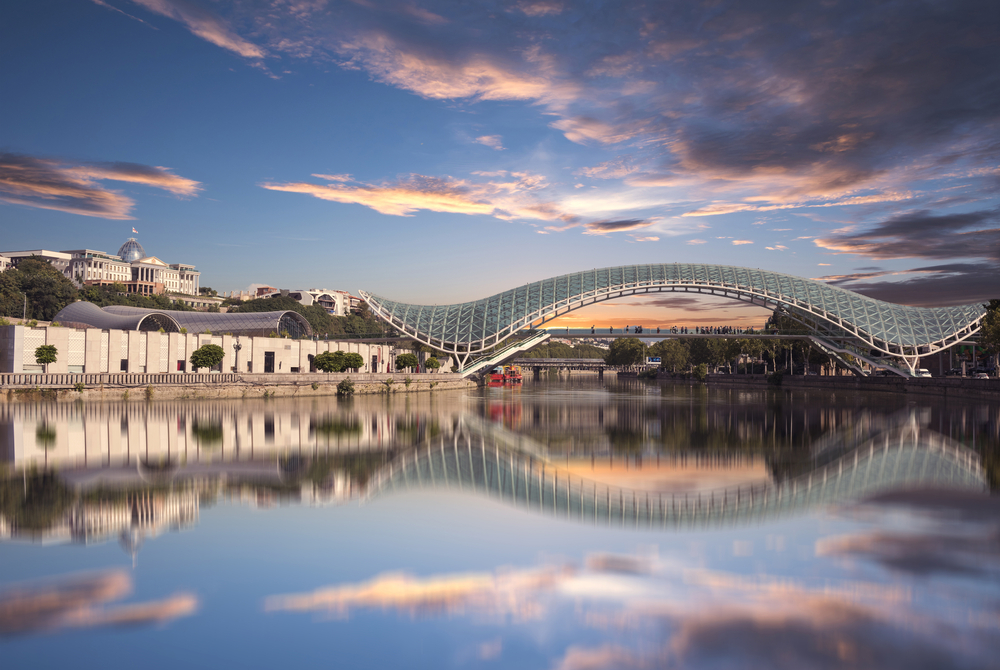


“People sing it in the streets and when they eat. It’s part of daily life. I even sing it when I’m with friends,” says Davit Suaridze, our tour guide and driver in Tbilisi and proprietor of Suar Travel Georgia, a tour operator. “Don’t get me started with Georgian dance!”
We arrived in Tbilisi via the midnight train the other night and spent some time in the city before traveling with Davit in the countryside.
Founded in the 5th century, Tbilisi is home to more than a million people. Unlike Armenia’s pink midrise buildings and tree-lined boulevards, walking along Tbilisi’s tight neighborhoods of old houses, cobblestone streets, century-old Orthodox churches felt like a stroll back in time.
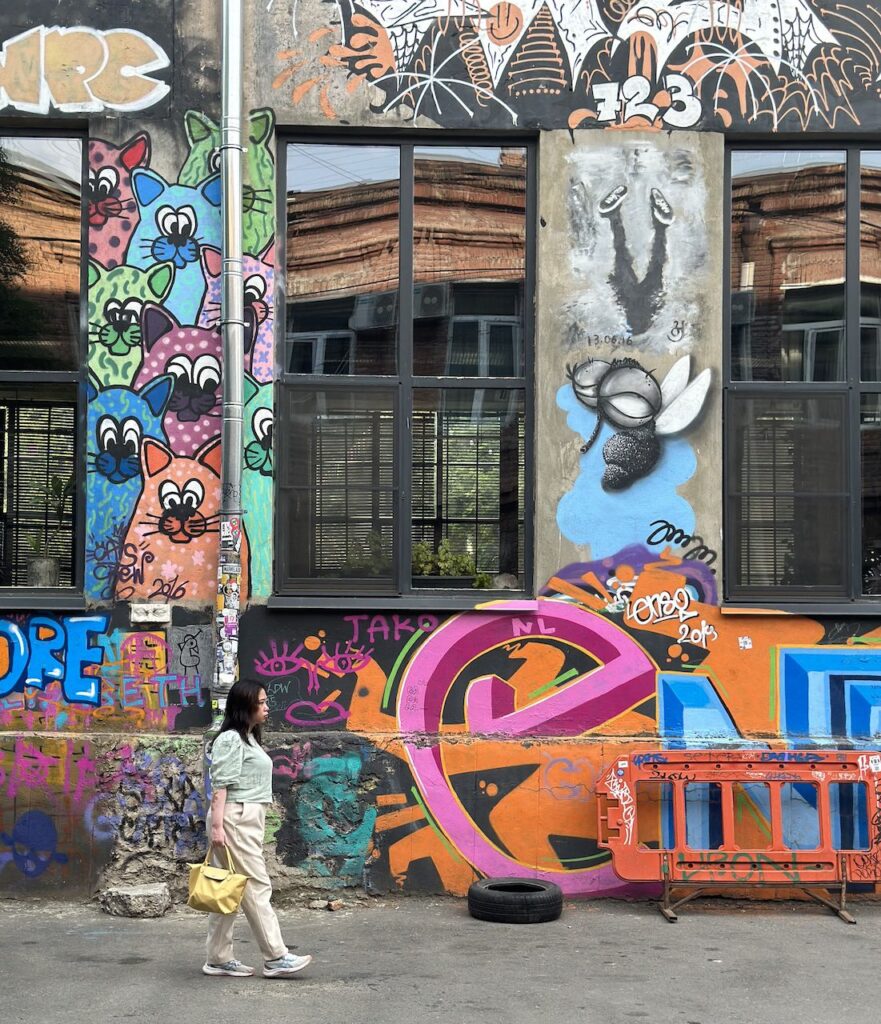


From the beautiful Peace Bridge crossing Kura River, visitors can walk into the snaking lanes of the Old Town. A cable car takes tourists to the hilltop Mother of Georgia statue, overlooking the city, from where they can stroll at the adjacent Narikala fortress that once protected Tbilisi.
Below Narikala is the neighborhood of sulfur bathhouses. Believed to have healing properties, the sulfur baths have been a staple in Tbilisi local life since its early days. Bathhouses, like Chreli Abano, require advance booking as they get full easily. We booked a private room for couples for an hour, which was just enough.
And there is the modern side of Tbilisi, too. Fabrika Tbilisi is a complex filled with artistically vandalized edifices, hip restaurants, local shops, and co-working spaces. Never miss visiting the towering Chronicles of Georgia, a collection of 16 pillars each more than 30 meters tall, depicting the country’s history.
Tipsy in Kakheti
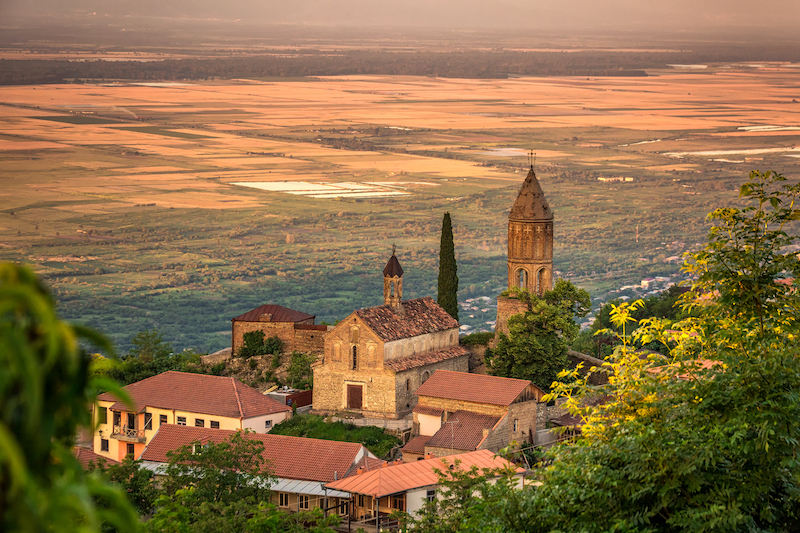


You need at least four days to start appreciating Georgia. With just two days left, Davit took us to two out-of-town itineraries: Gudauri, a mountain town in the Greater Caucasus, and Kakheti.
The landscape of Gudauri changes depending on the season. In the summer, the Caucasus Mountain range is covered by greenery with some snow-capped peaks. We took three cable cars from Gudauri to the next town, a journey of about two hours with spectacular views. During the winter, Gudauri transforms into a ski town, and more tourists arrive.
The drive to Gudauri was breathtaking, with stopovers at the old Ananuri Fortress and the Jinvali water reservoir.
Meanwhile, the road to the Kakheti region was a route of wine education. Georgia has an old winemaking tradition; archeologists say that wine probably first appeared in the Caucasus region. (If truly so, does that change the meaning of Old-World wines?)
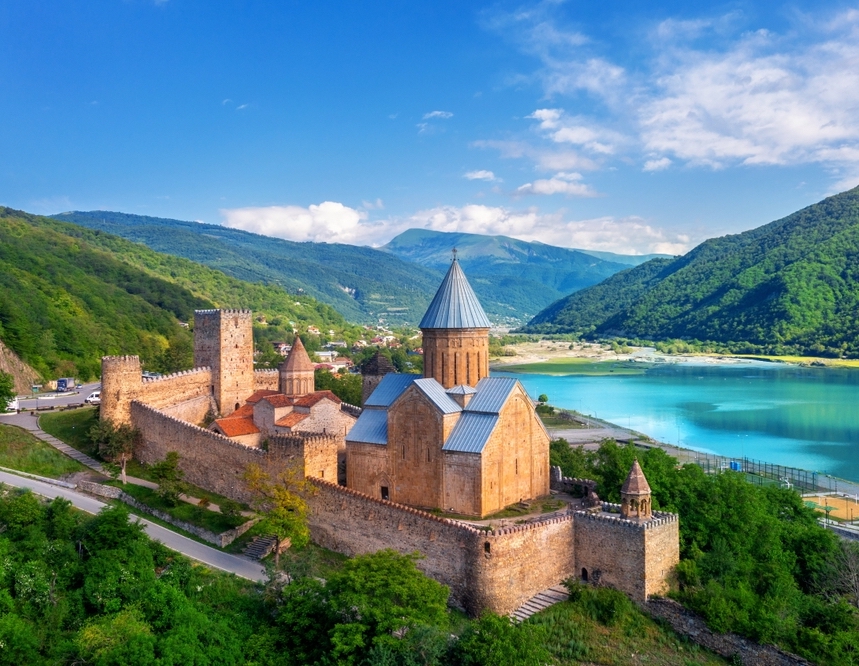


Davit took us to a Kakheti winery for a tour. Six tasting glasses of white and red wine later, we were still ready for a shot of the notorious chacha (Georgian grape vodka with 40 to 75% alcohol) until we were dizzy. It was only 10 a.m.
The city of Signagi, like Tbilisi, is old and romantic. Visit the Bodbe Monastery, built in the 9th century, where lies the remains of St Nino—an evangelist who converted the Georgian king Mirian III of Iberia to Christianity.
Planning your trip
It is best to pair two countries when traveling though the South Caucasus. Traveling between Armenia and Azerbaijan is difficult due to tensions over the border, while Georgia is a popular country to pair with either.
Direct flights to Tbilisi are available from major hubs like Istanbul, Dubai, Doha and London, while Yerevan flights go to Doha, Dubai, Abu Dhabi, Istanbul and European cities.
If you’re going on a train between Tbilisi and Yerevan, departure from either city is only every other day; there is no daily trip.
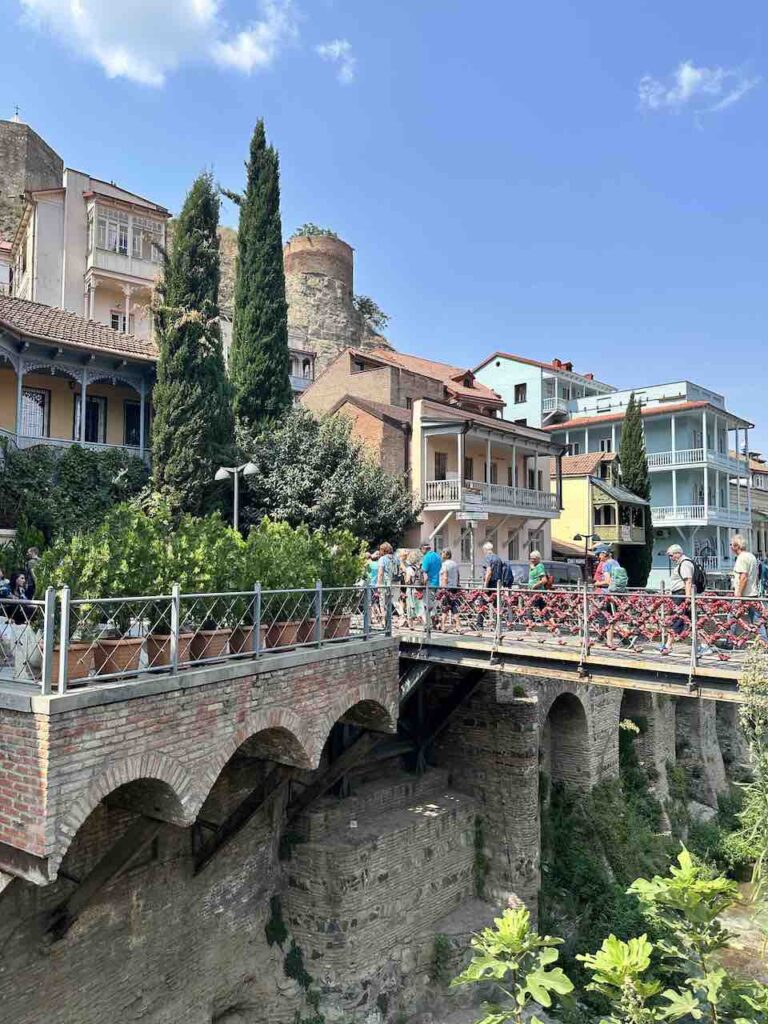


We bought our tickets personally at the Yerevan Railway Station. It is ideal to buy a first-class ticket for a comfortable private cabin complete with sleeping amenities and snacks. A private cabin for two costs P4,000 per head; a cabin for four costs P2,700 per head. The inspections on the Armenia-Georgia border will be long, so keep some offline movies for entertainment.
Tours in Georgia and Armenia can be booked via Viator, and there are free walking tours too.
We enjoyed having an English-speaking driver and tour guide like Davit in Georgia, who knew how to make his tourists laugh throughout the long drive across the Georgian countryside.

